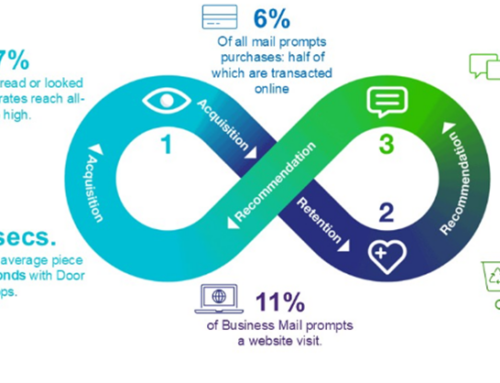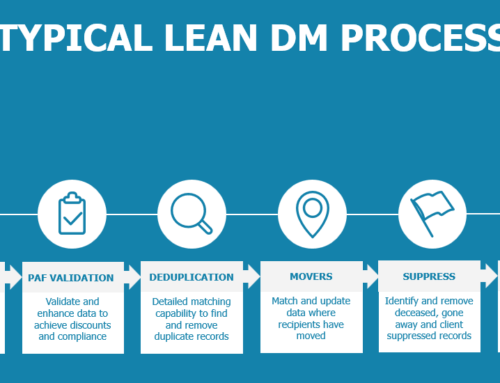The government’s Fundraising Review should have served as a stark warning to the direct marketing community that the fundamental targeting issues that have been swept under the carpet for years needed to be addressed. Now that the recommended Fundraising Preference Service is almost here, it’s worse than many of us could ever have imagined. The proposed ‘all or nothing’ approach will effectively put the kibosh on relationship marketing, the very thing that direct marketing excels at. Not to mention the potential mandatory FPS promotion in all charity direct mail. Whatever the eventual outcome, it is clear that it is going to limit consumer choice and cause mass confusion amongst charity supporters who are happy to hear from their favourite causes, but not from others. The fear is that once this becomes a precedent for one sector, we’ll see it leach across to other industries and we’ll find ourselves with the Financial Services Preference Service, The Utility Preference Service etc. as well as the existing preference services TPS and MPS. Whilst that is obviously very worst case scenario and unlikely, it’s certainly not inconceivable. And furthermore, I doubt that the introduction of more preference services will encourage those unscrupulous operators that ignore best practice already to toe the line.
It looks as if charities and direct marketers are going to have to take this one on the chin, however to stop increased dictates it is imperative that the industry takes its proverbial head out of the sand and rectifies the issues that are blighting the sector and tarnishing our reputation. It is well known that direct mail remains one of the most cost efficient and effective means of generating incremental sales and building brand, consequently spend and volumes are on the rise as more brands integrate the channel into their multichannel approaches. Now even pure play digital companies such as Airbnb are harnessing the power of the mail to bring a tangibility to their brands which is otherwise hard to muster. But this mail Renaissance will not last despite the sterling efforts of stalwarts like Royal Mail to promote the medium and modernise its processes if a large proportion of our output ends up unopened in the recycling as a result of mistargeting. Our most recent research reveals that incorrect personalisation and mailing the deceased and goneaways costs UK businesses almost £1 billion per year. Supermarkets have come under significant fire for the disposal of two per cent or 200,000 tonnes of food each year, and we are no different. Direct mailers are responsible for at least 240 million pieces of wrongly addressed mail, accounting for seven per cent of all mailings, and this doesn’t begin to take into consideration the issues of poor upfront targeting and permission screening which result in untold millions of pieces of mail that are sent to people that simply aren’t interested or relevant. Historically a blind eye has largely been turned by the industry to these problems because of good response rates and favourable ROI, but until they are addressed the reputation of the channel will continue to be called into question by the government, by clients and by the consumer media.
Mail producers and clients need to work together to eradicate the wastage in direct mail. There are many different approaches to take, however, our contribution is a new initiative we are calling Lean DM. Inspired by the concepts introduced by Toyota in the 1930s to eliminate waste in the manufacturing processes it focuses on removing anything that can damage the effectiveness of a campaign. An added bonus is that it cuts unnecessary costs too, and consequently boosts ROI. By applying Toyota’s lean thinking to direct mail five sources of waste within direct mail campaigns have been identified and we have redesigned our workflows around these key areas to reduce the number of obsolete mailings.
Lean DM: Summary of the five areas of wastage
1. Pack design
- Up to 34 per cent of postage costs can be saved by optimising pack format to maximise discounts
2. Postage optimisation
- Aim to deliver lowest cost postage methods and add value with Mailmark
- Remove data that doesn’t attract postage discounts (Overseas, Incomplete addresses etc)
3. Data formatting
- Addresses sourced from CRM and online data capture often include missing or incorrect data
- 30 per cent of consumers say they would not open a DM pack if their name was wrong – ensuring checks such obscenity screenings can ensure headline generating mistakes are avoided
4. Data quality
- 1.5 million people move each year. 500,000 people pass away. Mailing these people is not only costly but reflects badly on the brand.
- Duplicate mailings are a primary source of waste and also annoy consumers
5. Missing feedback loop
- 40 per cent of returned mailings are due to recipients wishing to opt out from mailings. Learn from mailings that are returned and improve targeting.
Wastage can be found at the early stages of specifying size, weight and format of the finished pack. Postage is often the most expensive part of a mail pack so ensuring the most efficient solution can dramatically impact the final cost of the campaign. Ensuring data is formatted correctly can both reduce penalties and increase recipient engagement rates whilst screening and correcting data quality issues can reduce brand damage. Finally, building in a feedback loop to learn from each mailing campaign can also have a massive impact on the overall effectiveness of future campaigns.
This is less about saving money (although this is a by-product) and more about protecting the client’s brand and our industry’s reputation. It is also about ensuring the Direct Mail channel performs to the best of its ability, through eradicating unnecessary waste. Working together we can all contribute to the clean-up that is essential for the future survival of direct mail.
For more information download our free guide to Lean DM™ here





